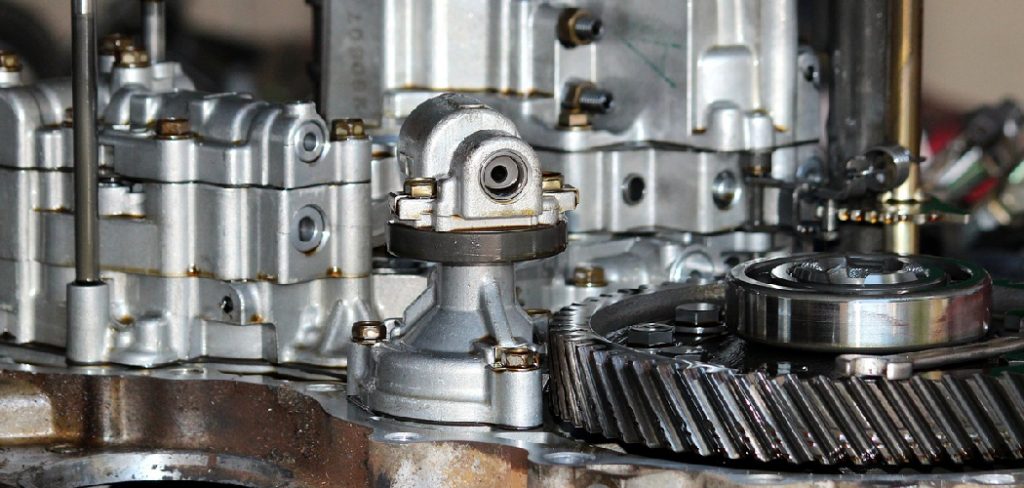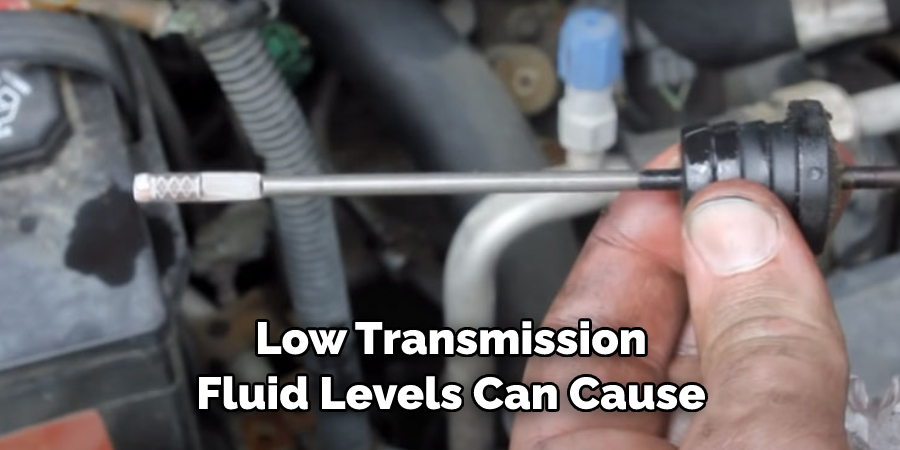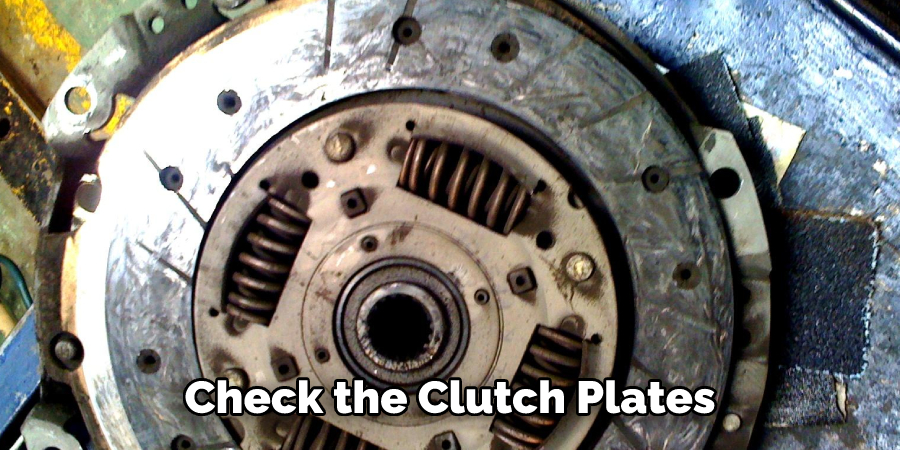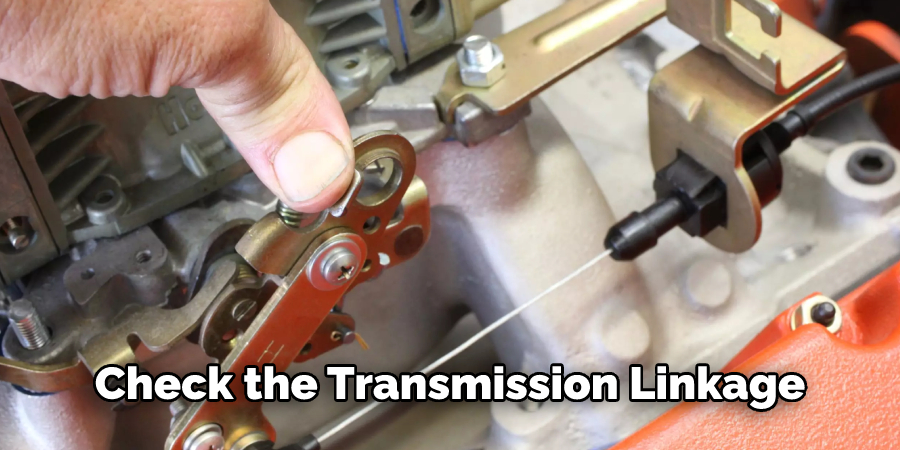An automatic transmission is a complex system that requires precise synchronization of various components to operate smoothly. One of the most common issues that can occur with an automatic transmission is delayed engagement.
Delayed engagement means that when you shift your car from park to drive or reverse, there is a delay before the transmission engages and the car starts to move. This can be frustrating and potentially dangerous, as it can cause the car to roll backward or forward unexpectedly.

There are several reasons why delayed engagement can occur, including low transmission fluid levels, a malfunctioning transmission solenoid, or worn-out clutches. However, the good news is that in many cases, fixing delayed engagement can be a relatively simple and straightforward process that you can do yourself with some basic tools and knowledge. In this article, we will go over how to fix an automatic delayed engagement in your automatic transmission.
Why Is There a Delay in My Gear Shift Automatic?
If you have an automatic gear shift vehicle, you may sometimes experience a delay in the gear shifting. This can be caused by a variety of reasons, including low transmission fluid level, faulty or worn-out parts, incorrect gear selection, or even driver error. In any case, it is important to have this issue addressed by a professional in order to prevent further damage and improve your driving experience.
The first step towards fixing an automatic delayed engagement is to diagnose the problem accurately. If the transmission fluid level is too low, topping it off should restore the normal operation of the transmission system. However, if this does not solve the problem, then other possible causes must be investigated, such as faulty solenoids, bad gears, or shifter linkage issues.
Additionally, incorrect shifting can be due to driver error. To avoid this, you should familiarize yourself with the operation of the automatic gear shift and make sure that all gears are correctly selected before attempting to accelerate or decelerate the vehicle. This can help prevent transmission damage by ensuring that the correct gear is engaged at all times.
If none of these solutions seem to fix the issue, then it may be necessary to take your car into a professional mechanic for further diagnosis and repair. A professional will be able to diagnose any underlying problems with precision and recommend the most appropriate solution for fixing an automatic delayed engagement.
10 Methods How to Fix an Automatic Delayed Engagement
1. Check the Transmission Fluid Level:
Low transmission fluid levels can cause a delayed engagement in your vehicle. You can check the fluid level by locating the transmission dipstick under the hood of your car. The dipstick usually has a red handle and is located near the engine.
To check the fluid level, make sure the engine is running, and the transmission is in park or neutral. Pull out the dipstick and wipe it clean, then reinsert it and pull it out again to check the fluid level. If the level is low, add more fluid until it reaches the recommended level.

2. Inspect the Transmission Filter:
The transmission filter is responsible for trapping dirt and debris from the fluid that flows through the transmission. Over time, this filter can become clogged, which can cause a delay in engagement. To fix this problem, you’ll need to replace the transmission filter.
The filter is usually located inside the transmission pan and can be accessed by removing the pan. While you’re replacing the filter, it’s a good idea to also replace the transmission fluid and pan gasket. If you’re uncomfortable replacing the filter yourself, you can take your car to a local auto repair shop.
3. Check the Transmission Solenoid:
The transmission solenoid is an electromechanical valve that controls the flow of fluid through the transmission. If this solenoid is faulty, it can cause a delayed engagement in your vehicle. To check the solenoid, you’ll need to use a multimeter to test the electrical resistance of the solenoid. If the resistance is outside the recommended range, you’ll need to replace the solenoid.
While you have the solenoid out of the car, you should also inspect it for any signs of damage or wear. If there is any evidence of wear, you’ll need to replace the entire solenoid. However, if the solenoid appears to be in good condition, you can reinstall it and continue troubleshooting.
4. Replace the Torque Converter:
The torque converter is a fluid coupling device that connects the engine to the transmission. If this component is faulty, it can cause a delayed engagement in your vehicle. To fix this problem, you’ll need to replace the torque converter. This is a complex and expensive repair that is best left to a professional mechanic. If you decide to do it yourself, make sure that you follow the manufacturer’s instructions closely and use the correct parts. To ensure that the repair is properly done, have it checked by a professional mechanic before driving your vehicle.
5. Check the Clutch Plates:
The clutch plates are responsible for engaging and disengaging the transmission gears. Over time, these plates can wear out, which can cause a delay in engagement. To fix this problem, you’ll need to replace the clutch plates. This is a complex and labor-intensive repair that is best left to a professional mechanic. While it can be a costly repair, it will help ensure that your transmission remains in proper working order.

6. Check the Transmission Mounts:
The transmission mounts are responsible for holding the transmission in place. If these mounts are worn or damaged, it can cause the transmission to move out of position, which can cause a delay in engagement. To fix this problem, you’ll need to replace the transmission mounts. This is a relatively simple repair that can be done with basic tools.
If you’re not sure how to do it, your local mechanic can help. Once the new mounts are installed, the transmission should be able to engage properly. Although this is a relatively easy repair, it’s important to make sure the new mounts are tight and secure. If they are not properly installed, they can cause further problems.
7. Check the Transmission Linkage:
The transmission linkage is responsible for connecting the shifter to the transmission. If this linkage is misaligned or worn, it can cause a delay in engagement. To fix this problem, you’ll need to adjust or replace the transmission linkage. This is a relatively simple repair that can be done with basic tools. If you’re unsure of how to do this, seek the help of a professional.

To inspect the linkage, start by locating the transmission shifter and inspecting its condition. If it’s bent or corroded, you’ll need to replace it. If it looks okay, move on to the connection points between the shifter and the linkage. Make sure they are properly aligned and not worn down. If all looks okay, test to make sure the transmission shifts smoothly when you move the shifter.
8. Check the Throttle Cable:
The throttle cable is responsible for transmitting the driver’s input to the engine’s throttle. If this cable is loose or worn, it can cause a delay in engagement. To fix this problem, you’ll need to adjust or replace the throttle cable. This is a relatively simple repair that can be done with basic tools.

If you’re not sure how to do it, consult a professional. To find the right part, make sure to confirm your vehicle’s make and model before purchasing. However, it can be a bit of a hassle; taking the time to go through this whole process will ensure that your automatic delayed engagement is fixed.
9. Check the Vacuum Modulator:
The vacuum modulator is responsible for regulating the transmission’s hydraulic pressure. If this component is faulty, it can cause a delay in engagement. To check the vacuum modulator, you’ll need to disconnect the vacuum line and inspect it for any signs of damage or wear. If the vacuum line is in good condition, you’ll need to test the modulator’s diaphragm using a vacuum gauge. If the diaphragm is damaged or worn, you’ll need to replace the vacuum modulator.
10. Check the Electronic Control Module:
The Electronic Control Module (ECM) is responsible for controlling the transmission’s shifting and engagement. If the ECM is faulty, it can cause a delay in engagement. To fix this problem, you’ll need to have the ECM tested and, if necessary, replaced by a professional mechanic. While the ECM may be expensive to replace, it is important to ensure that your transmission is operating properly.
Conclusion
All in all, it’s important to stay vigilant when trying to repair an automatic delayed engagement. With these tips, you can make sure you engage the transmission correctly and quickly. Don’t be afraid to ask for help from knowledgeable professionals if need be. Fixing a transmission can seem daunting, but with the right knowledge and steps, anyone can do it!
Taking preventative measures and being proactive is always the best course of action. Now that you know How to Fix an Automatic Delayed Engagement, get out there and start putting this helpful advice into practice today!
